
How to Use Mini Boost Converter HW-085 1.5A - 5/8/9/12V Fixed: Examples, Pinouts, and Specs
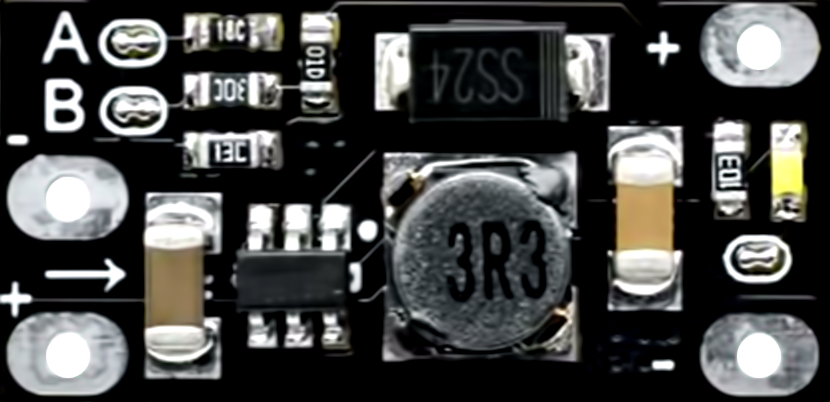
 Design with Mini Boost Converter HW-085 1.5A - 5/8/9/12V Fixed in Cirkit Designer
Design with Mini Boost Converter HW-085 1.5A - 5/8/9/12V Fixed in Cirkit DesignerIntroduction
The Mini Boost Converter HW-085 is a compact DC-DC step-up module designed to increase a lower input voltage to a fixed higher output voltage. It supports four fixed output voltage levels: 5V, 8V, 9V, and 12V, selectable via a jumper. With a maximum output current of 1.5A, this module is ideal for powering devices that require a higher voltage than the input source can provide. Its small size and efficiency make it suitable for portable electronics, battery-powered projects, and DIY applications.
Explore Projects Built with Mini Boost Converter HW-085 1.5A - 5/8/9/12V Fixed
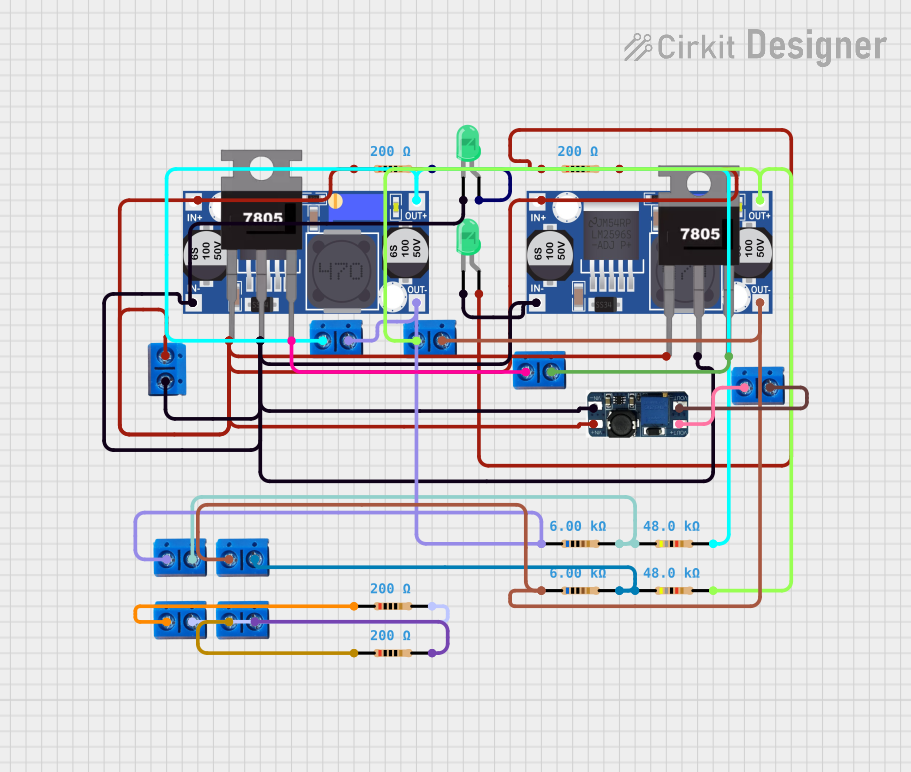
 Open Project in Cirkit Designer
Open Project in Cirkit Designer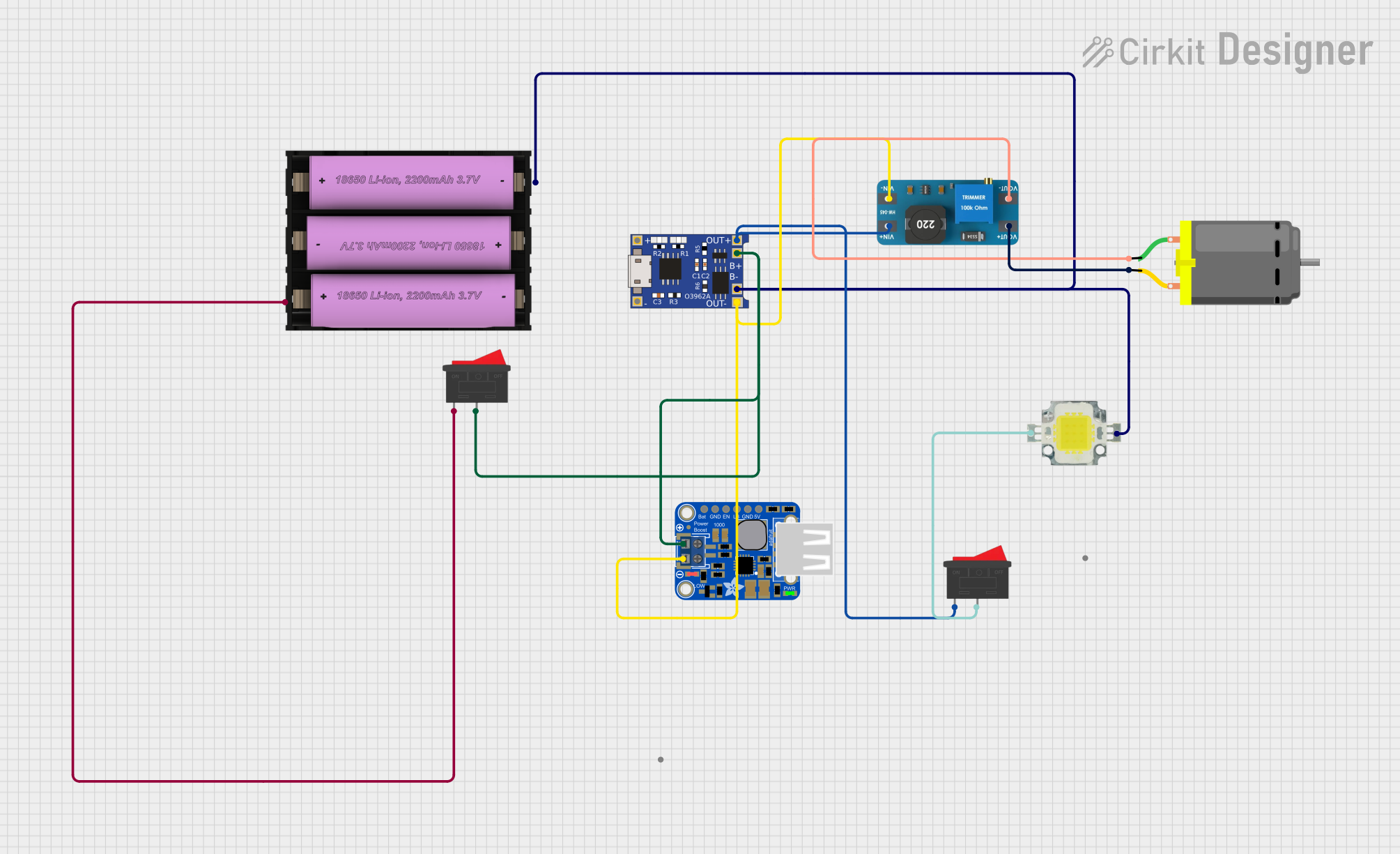
 Open Project in Cirkit Designer
Open Project in Cirkit Designer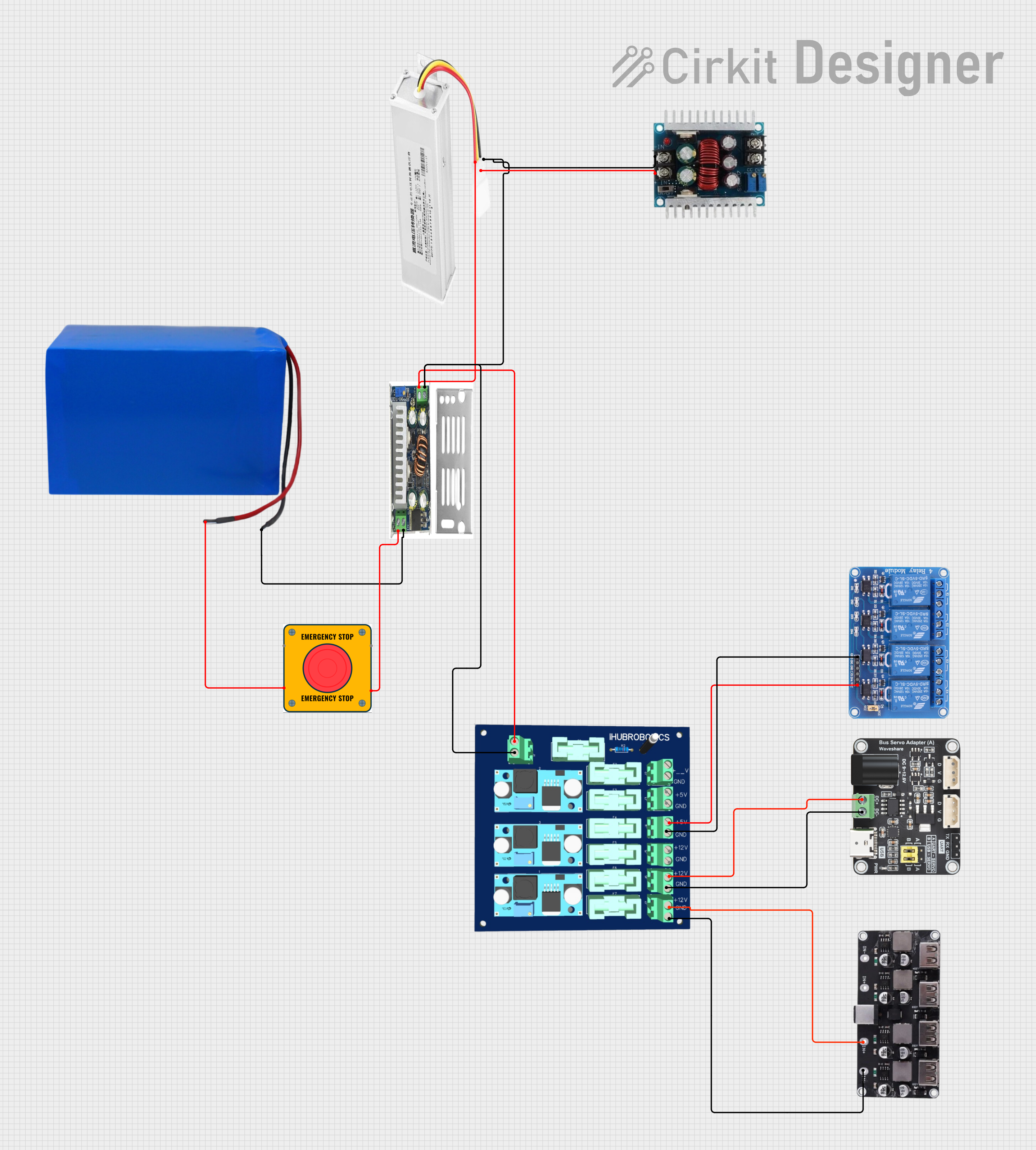
 Open Project in Cirkit Designer
Open Project in Cirkit Designer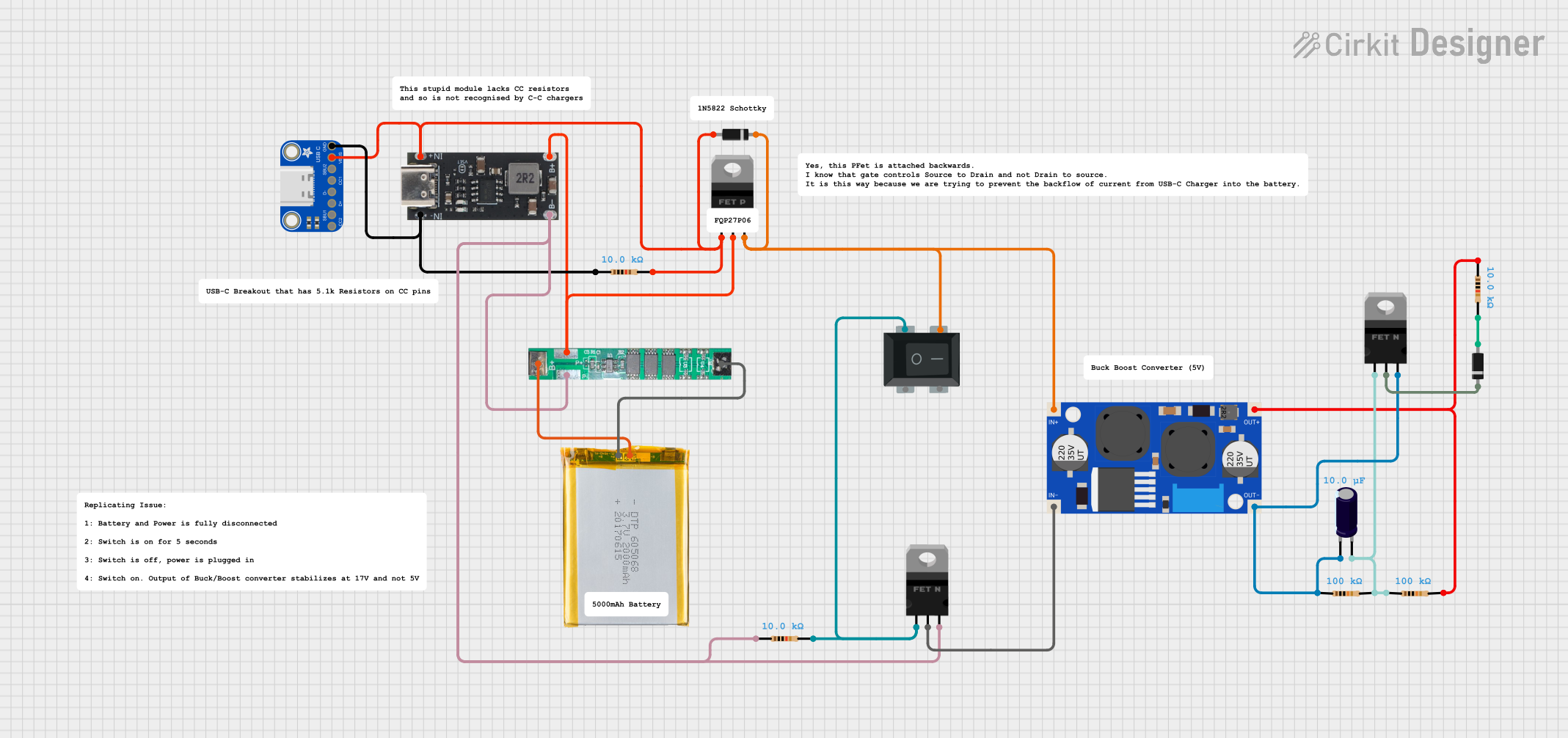
 Open Project in Cirkit Designer
Open Project in Cirkit DesignerExplore Projects Built with Mini Boost Converter HW-085 1.5A - 5/8/9/12V Fixed

 Open Project in Cirkit Designer
Open Project in Cirkit Designer
 Open Project in Cirkit Designer
Open Project in Cirkit Designer
 Open Project in Cirkit Designer
Open Project in Cirkit Designer
 Open Project in Cirkit Designer
Open Project in Cirkit DesignerCommon Applications
- Powering microcontrollers, sensors, and modules from a lower voltage source
- Boosting voltage from batteries (e.g., 3.7V Li-ion or 1.5V AA cells)
- DIY electronics projects requiring compact power solutions
- Portable devices and USB-powered gadgets
Technical Specifications
Key Technical Details
| Parameter | Value |
|---|---|
| Input Voltage Range | 2V to 24V |
| Output Voltage Options | 5V, 8V, 9V, 12V (selectable via jumper) |
| Maximum Output Current | 1.5A (varies with input voltage) |
| Efficiency | Up to 93% (depending on input/output load) |
| Dimensions | 30mm x 17mm x 14mm |
| Weight | ~5g |
Pin Configuration and Descriptions
| Pin Name | Description |
|---|---|
| VIN | Positive input voltage terminal (2V to 24V) |
| GND | Ground terminal (common ground for input and output) |
| VOUT | Positive output voltage terminal (fixed at 5V, 8V, 9V, or 12V, as selected) |
Jumper Configuration
| Jumper Position | Output Voltage |
|---|---|
| Short 5V | 5V |
| Short 8V | 8V |
| Short 9V | 9V |
| Short 12V | 12V |
Usage Instructions
How to Use the Mini Boost Converter HW-085
Connect the Input Voltage:
- Connect the positive terminal of your power source to the
VINpin. - Connect the negative terminal of your power source to the
GNDpin. - Ensure the input voltage is within the range of 2V to 24V.
- Connect the positive terminal of your power source to the
Set the Desired Output Voltage:
- Use the onboard jumper to select the desired output voltage (5V, 8V, 9V, or 12V).
- Ensure the jumper is securely placed in the correct position.
Connect the Load:
- Connect the positive terminal of your load to the
VOUTpin. - Connect the negative terminal of your load to the
GNDpin.
- Connect the positive terminal of your load to the
Power On:
- Turn on the input power source. The module will step up the input voltage to the selected output voltage.
Important Considerations and Best Practices
- Input Voltage Range: Ensure the input voltage is within the specified range (2V to 24V). Exceeding this range may damage the module.
- Output Current Limit: The maximum output current is 1.5A, but it may vary depending on the input voltage and load. Avoid overloading the module.
- Heat Dissipation: At higher loads, the module may generate heat. Ensure adequate ventilation or consider adding a heatsink if necessary.
- Polarity Protection: The module does not have reverse polarity protection. Double-check connections before powering on.
- Noise Filtering: If using the module in sensitive circuits, consider adding capacitors at the input and output to reduce noise.
Example: Using with an Arduino UNO
The Mini Boost Converter HW-085 can be used to power an Arduino UNO from a 3.7V Li-ion battery by stepping up the voltage to 5V.
Circuit Connection
- Connect the battery's positive terminal to
VINand negative terminal toGND. - Set the jumper to the 5V position.
- Connect the
VOUTpin to the Arduino's 5V pin andGNDto the Arduino's GND pin.
Sample Code
// Example code to blink an LED connected to Arduino UNO
// Ensure the Mini Boost Converter is providing 5V to the Arduino
void setup() {
pinMode(13, OUTPUT); // Set pin 13 as an output for the onboard LED
}
void loop() {
digitalWrite(13, HIGH); // Turn the LED on
delay(1000); // Wait for 1 second
digitalWrite(13, LOW); // Turn the LED off
delay(1000); // Wait for 1 second
}
Troubleshooting and FAQs
Common Issues and Solutions
No Output Voltage:
- Cause: Incorrect jumper configuration or loose connections.
- Solution: Verify the jumper is set to the desired output voltage and check all connections.
Output Voltage is Incorrect:
- Cause: Input voltage is too low or jumper is in the wrong position.
- Solution: Ensure the input voltage is within the specified range and recheck the jumper setting.
Module Overheats:
- Cause: Excessive load or poor ventilation.
- Solution: Reduce the load current or improve ventilation around the module.
Load Does Not Power On:
- Cause: Load requires more current than the module can provide.
- Solution: Ensure the load's current requirement is within the module's 1.5A limit.
FAQs
Q1: Can I use this module to charge a battery?
A1: No, this module is not designed for battery charging. It is a step-up converter for powering devices.
Q2: What happens if I reverse the input polarity?
A2: The module does not have reverse polarity protection and may be damaged. Always double-check connections.
Q3: Can I adjust the output voltage to a custom value?
A3: No, the output voltage is fixed to 5V, 8V, 9V, or 12V, as selected by the jumper.
Q4: Is the module suitable for audio applications?
A4: The module may introduce noise, so additional filtering may be required for sensitive audio circuits.